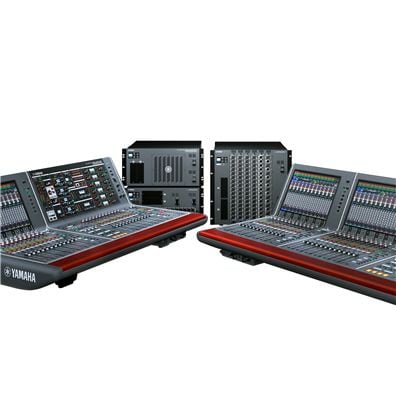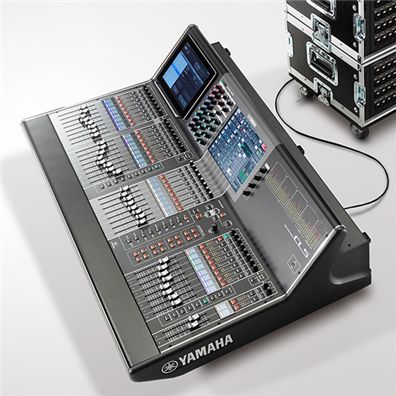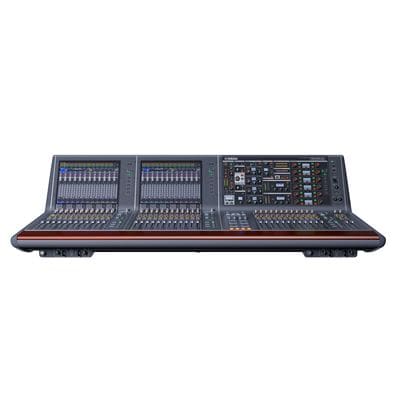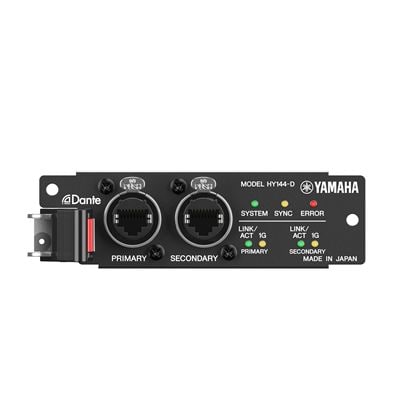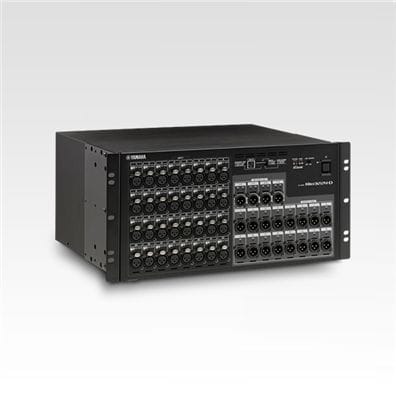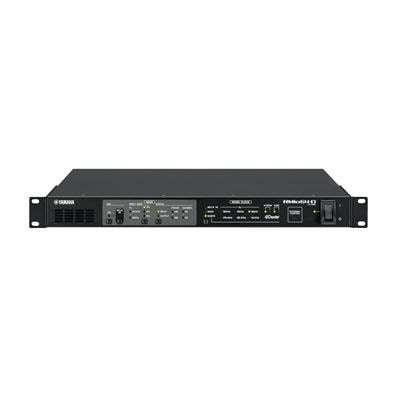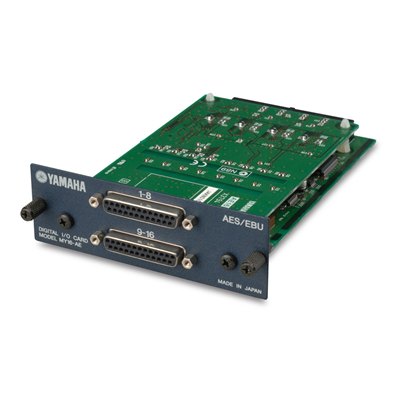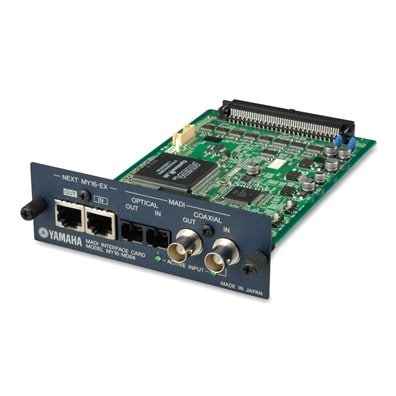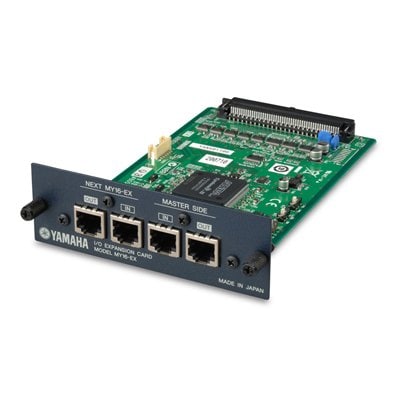Yamaha At The Heart Of Mediacorp Studios

Yamaha RIVAGE PM10 handles variety of shows and their unique requirements

Since its first radio broadcast in 1936 and television broadcast in 1963, Mediacorp has evolved and grown in stature and structure over the decades. While the media competitive landscape has increased over the years, Mediacorp continues to engage the hearts and minds of Singapore audiences through its content and delivery platforms. Today, Mediacorp has over 50 products and brands in four languages (English, Mandarin, Malay and Tamil), reaching out to virtually all adults in Singapore every week.
After 63 years at its previous home in Caldecott Hill, Mediacorp began an 18-month migration from December 2015 to its new home in one-north. Known as Mediacorp Campus, the 800,000 sq ft gleaming campus stands majestically with its iconic sweeps and curves, designed by award-winning Japanese architect Maki & Associates.
Two of the purpose-built studios now handle all four language live productions from game shows to variety programmes. Studio 1 is the larger studio and features the Yamaha RIVAGE PM10 and a Yamaha CL5 for monitoring purposes. Another CL5 can be found in the smaller Studio 2.
The FOH Integration
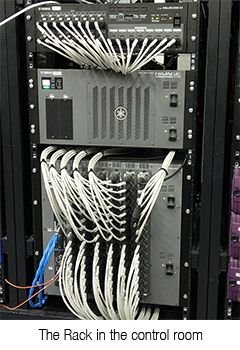
Sitting a-top a specially made structure, the sound engineer and his crew have a perched view of Studio 1. The Studio has retractable seats for audience and at the right hand back-end corner has a Yamaha CL5 for monitoring purposes. The CL5 is portable so that it can serve as a multi-purpose console should there be a need.
Taking pride of place at the Studio is the Yamaha RIVAGE PM10. The Yamaha RIVAGE PM10 System configuration consists of 1x CS-R10 control surface, 1x DSP-R10 DSP Engine for Mixing capacity at 96kHz sampling rate, 144 Input channels, 72 mix buses, 36 matrix buses and Stereo buses A&B (or Mono bus). Complementing the console are 1x RPio622 I/O Rack featuring 64 Mic Line Input and 32 Line Analog Output and the other unit of RPio622 I/O Racks that offer 16 Mic Line Input, 16 Line Digital-Analog Output, 16 AES (16 In 16 Out).
The Yamaha RIVAGE PM10 at the studio uses the TWINLANe audio proprietary Network protocol as its core system. This is configured in a loop that connects the DSP to the RPio racks and back to the DSP via a multi-mode fiber. The control surface is connected via a Cat5 cable to the DSP providing to and fro transmission. In order to integrate the Dante audio network, a HY144-D audio interface card was added to the DSP-R10. A separate Cat cable connects the Dante to the DSP.
“With the TWINLANe, it is a closed network that does not need an IP assigned. As a ring topology, there is redundancy as well. From a technical viewpoint, because it is a closed network there is no need for networking skills which makes it all so much easier for installation,” said Aloysius Tang, Technical Support Engineer, Sales & Marketing, ASEAN PA Division, Yamaha Music (Asia) Private Limited.
Lee Mun Tong, Senior Manager, Audio Group (Studio), Production Resource of Mediacorp Studios, was responsible for overseeing the implementation of the audio solutions at the studio. “In our Studio 1 and 2, the TV broadcast is running on LAWO Ravenna as the main network and Dante as the backup audio network. The FOH and stage monitor are running Dante as the main audio networks. With this configuration, we are able to send and grab audio signals easily from any of the mixing positions within both the studios.”
About the RIVAGE PM10
“We wanted a console that was flexible due to all the different type of programmes we handle in different languages. Reliability is very important as the recordings are ‘live’. The PM10 is used for our mega productions. The PM10 is very different from the other consoles that Yamaha has produced,” said Mun Tong.
“The new scene management has made things a lot easier for us. Getting scenes in sequence is now just a knob’s turn away compared to previously where the scene not in sequence needs to be copied to a different slot first before being restacked in order again. The other nice features are the PM10’s screen and fader bays which can be unlinked into 3 separate sections. This gives us the flexibility of being able to have 2 engineers on the console at the same time.
The PM10 also has this newly added feature called SILK Hybrid Mic Preamps. As SILK is now built-in on the circuitry of the Analog Input strip, we are unable to use it on the wireless mics which are running on Dante. Therefore, we use it mainly for ‘live’ band performances to enhance the audio quality.”
A new firmware version has been released by Yamaha for the RIVAGE PM10. At the time of the interview, the software updated had not taken place yet but Mun Tong is excited about the new features that will be released which he feels will further enhance their operational capabilities.
“Although the Yamaha RIVAGE PM10 is a relatively new console, we are confident of our purchase as Yamaha is an established company with a strong legacy. We are in a constant dialogue with Yamaha so that we can work together to get the best out of this new console. The beauty with the RIVAGE PM10 is its ability to scale up should we need it,” commented Mun Tong.
Yamaha CL5
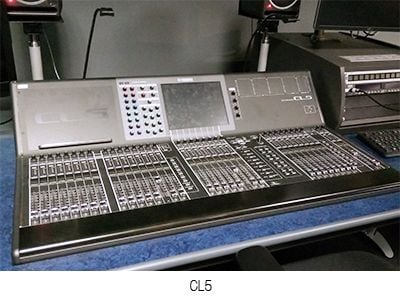
The TV Studios between them features (4) units of the Yamaha CL5. The CL5 are complemented with 3x Rio1608-D, 16 channels stage I/O racks; (6x) Rio3224-D that provides 32 ins, 16 outs, and four AES/EBU outputs, 1x RMio64-D Dante/MADI conversion I/O rack; 2x RSio64-D audio interface that can convert between Dante and Mini-YGDAI formats for up to 64 Inputs and 64 Outputs as well as 7x MY16-AE (AES audio interface), 1x MY16-MD64 + 1x MY16-EX (32 MADI Audio Interface) and 2x MY8-AE96S digital cards.
“We use the CL5 as backup broadcast console in both studios; as stage monitor in Studio 1 and as FOH console in Studio 2. We are also planning to expand the capabilities of the Studio 1 unit in the near future to support the cascade link option. The CL5s are truly value for money with its many functionalities,” said Mun Tong.
“Both the RIVAGE PM10 and the CL5 offer us great flexibility. The Dante network audio makes it easy for us to manage the audio signals. Because this is a broadcast studio, we work on a sampling rate of 48kHz, this is resolved with the DSP that helps with the processing required before the signals are sent through to the Dante Network,” commented Mun Tong.
Article contributed by Thomas Richard Prakasam - Spinworkz Pte Ltd

